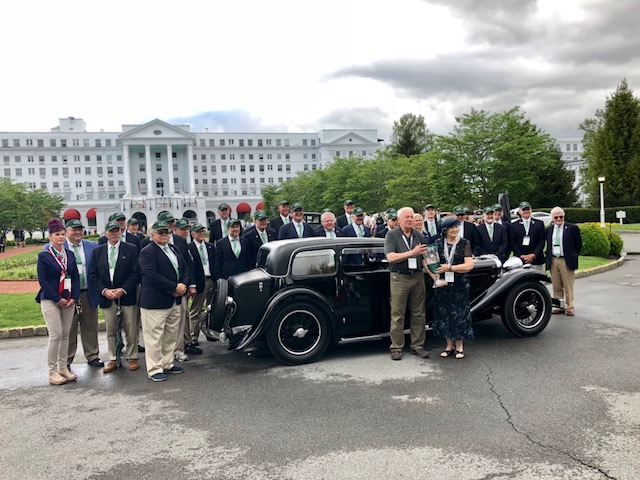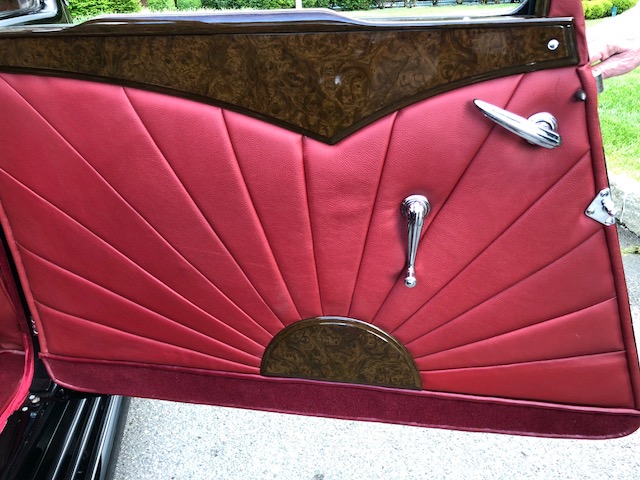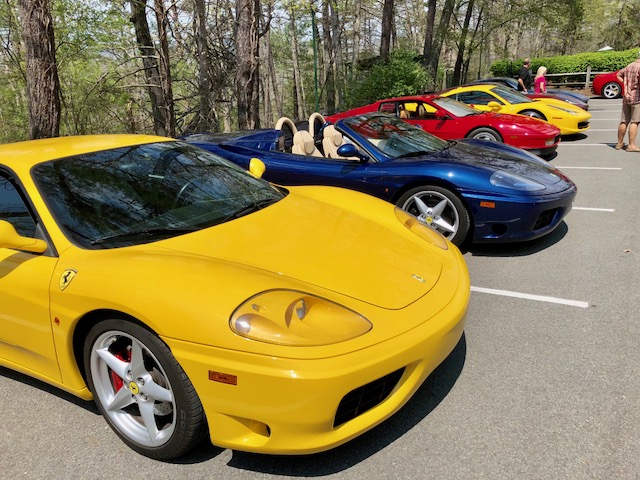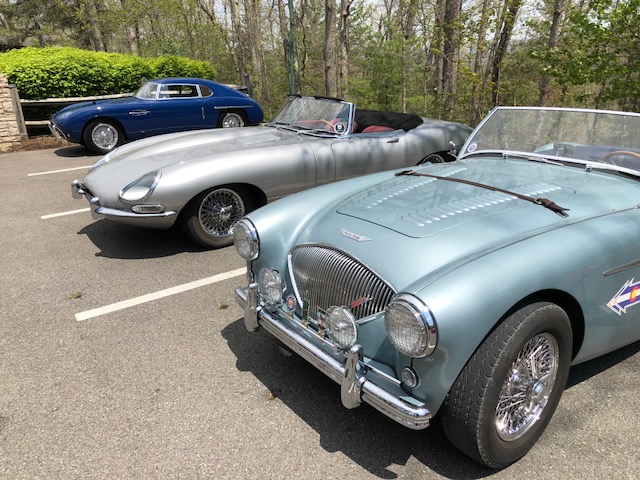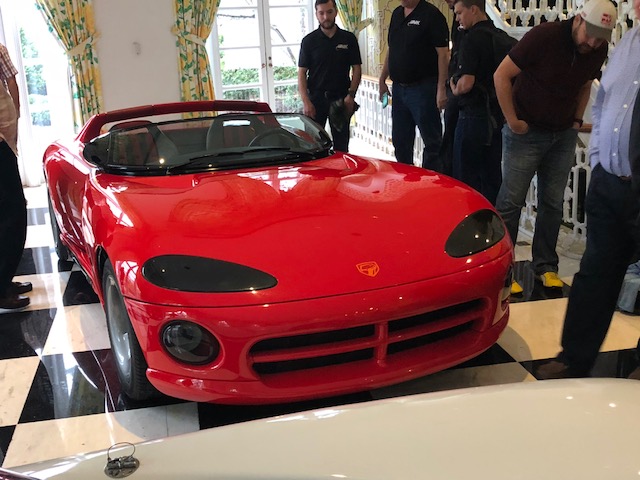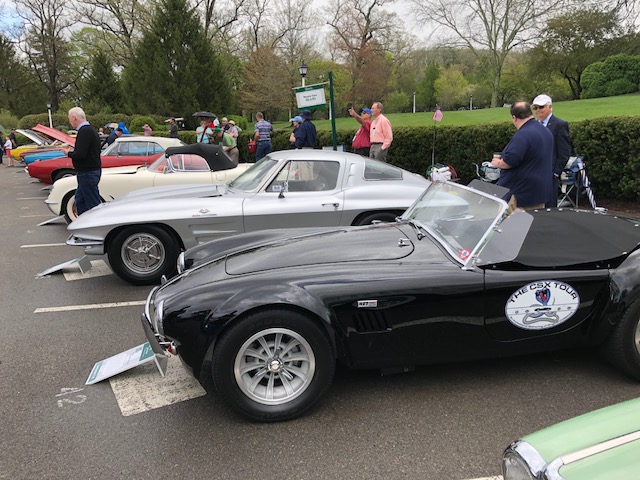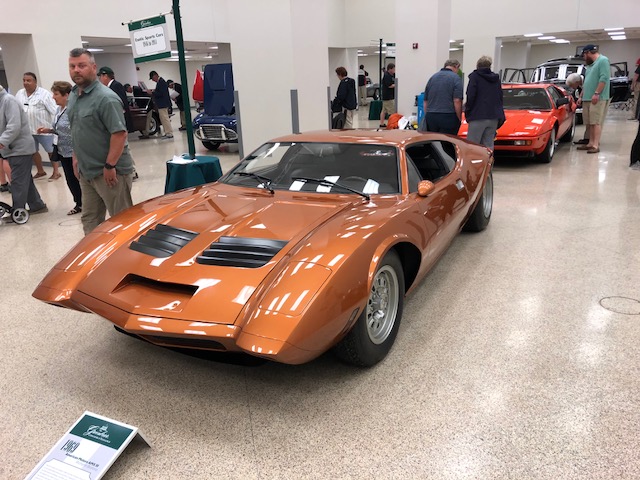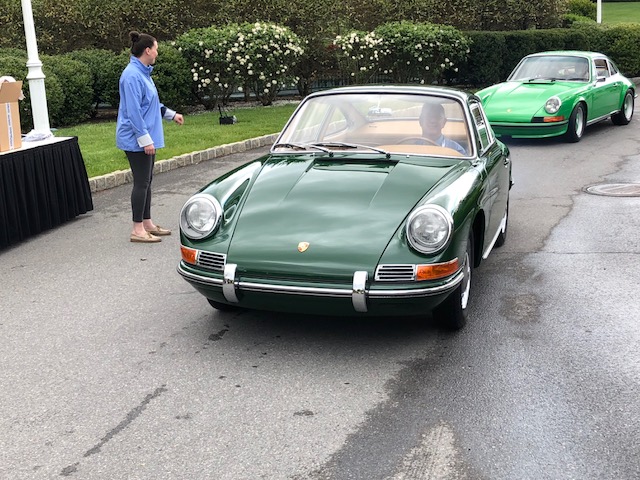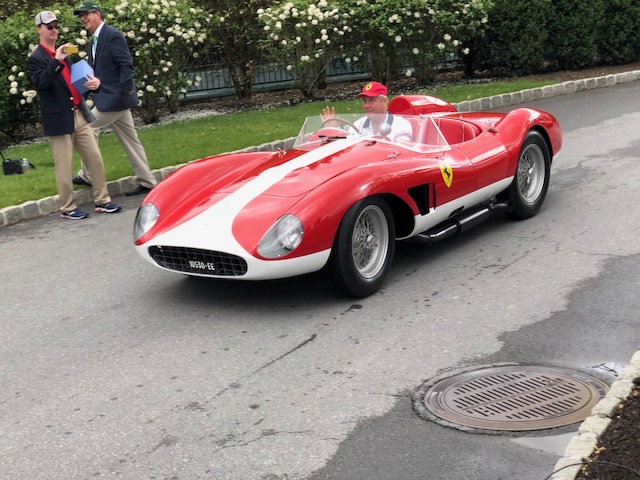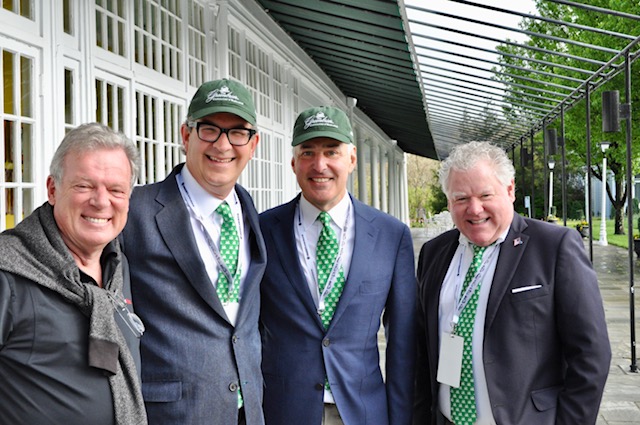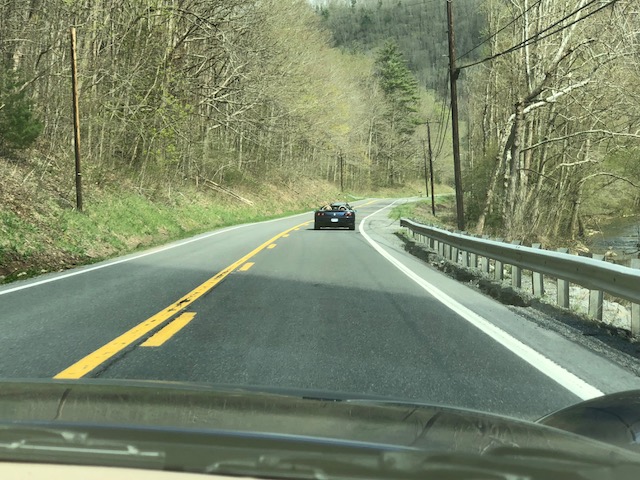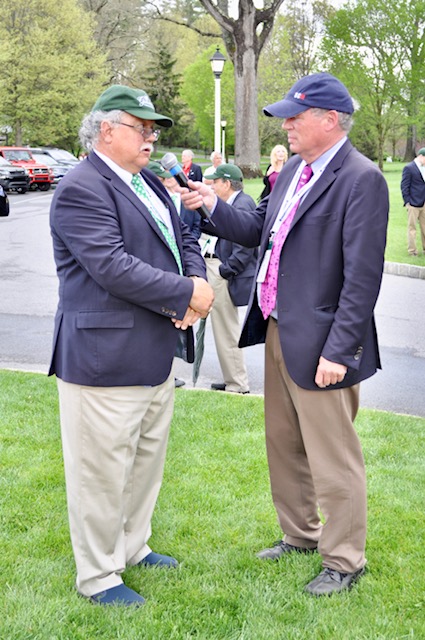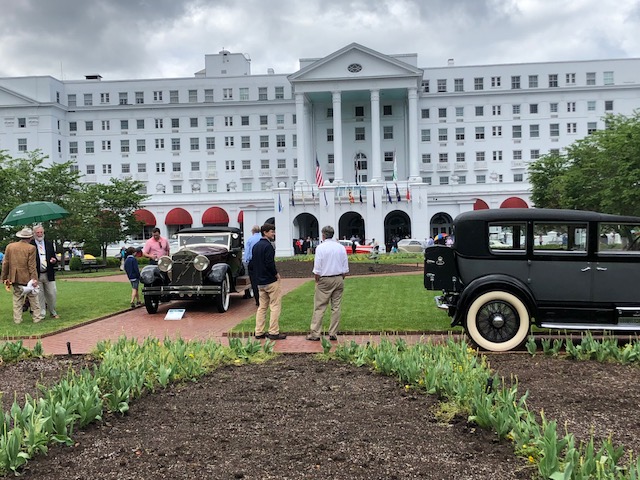
During the Cold War, a top-secret fallout shelter designed to house 1,100 people (every member of the U.S. Congress and one aide per politician) during a nuclear war was constructed under The Greenbrier in White Sulphur Springs, WV.
This past Sunday, for the first time, The Greenbrier’s bunker became the home for a variety of sports and racing cars, including a 1957 Ferrari 500 TRC and a 1972 McLaren M8F CanAm.
The Greenbrier is a “Grand Hotel” in the traditional sense. It has 710 rooms set on 11,000 acres in West Virginia. It was founded in 1778, and is known for its hot sulfur springs and their supposed curative powers.
This was the first-ever Greenbrier Concours d’Elegance, which is the brainchild of long-time concours and vintage event organizers Bernie Martin, Paul Ianuario and Wayne Long.
A first event of this scale always has to contend with a few unexpected twists and turns, but this one had to fight the weather for two days. Torrential rains of a tropical nature swept the area on Saturday and Sunday. The organizers quickly formulated a “Plan B” and then a “Plan C” to ensure that the event continued.
By 7 a.m. on Sunday morning, organizers decided to move the concours off of the flooded golf course and to the Greenbrier Hotel. About 70 of the cars were arrayed on the oval entrance to the hotel, and cars that were more sensitive to the weather were moved directly into the bunker.
The 112,544-square-foot bunker was built between 1958 and 1961, and it is burrowed 720 feet into the hillside under the Greenbrier Hotel’s West Virginia Wing. I’m sure that the designers never pictured a parade of gorgeous collector cars rolling into their bunker.
I was privileged to be the emcee of the Greenbrier Concours.
I arrived on Thursday, and met good friends and SCM contributors Andy Reid and Larry Prinz in the hotel casino (sports coats required).
The next day on the tour, I was the navigator for Wayne Long as he drove a Panoz Esperante in a spirited fashion on the lovely backroads of West Virginia. I’d never been in a Panoz before, and it felt like a cross between a Miata on steroids and a Viper that had been forced to wear a coat and a tie.
Saturday was Car Clubs on the Showfield day. The turnout was light due to the intermittent rains, but I found a variety of cars to examine, including a supercharged Lotus Elise and a pair of extremely original cars, a Triumph GT6 and a Mercedes 230S.
Automotive historian and SCM contributor Ken Gross was there as a judge, with his wife Trish, and we spent time talking about his participation in the upcoming SCM 30th Anniversary tour.
“I haven’t driven an Alfa Giulietta Veloce since I went on the California Mille 20 years ago,” Ken remarked. I told him he’d have five to choose from on the tour.
Despite playing cat and mouse with rain squalls all day Sunday, the clouds broke and there was bright sunshine for the awards ceremony. Best in Class was awarded in eleven classes, ranging from Brass Era cars to Vipers.
Best of Show was awarded to a spectacular 1933 Swallow Sidecar (Jaguar) SS 1 Fixed Head Coupe owned by Carl and Marcia Baxter, of Huntingdon, PA. It is one of six known to survive, and was restored to a spectacular level.
The Greenbrier Concours d’Elegance put the Dodge Viper under the spotlight and recognized it as a contemporary classic. I moderated a panel discussion that included Roy Sjoberg, who is known as “The Father of the Viper.” The panel agreed that it was unlikely we would ever see a naturally aspirated two-seat super car again.
The Greenbrier has the elements necessary to become a significant concours. The location is spectacular. The event is partner/spouse friendly, with a host of activities on site from glass blowing to cooking classes. The organizers have a great deal of experience to draw on. And even in this first year, the curated quality of the cars was top-rate.
I look forward to returning next year.
